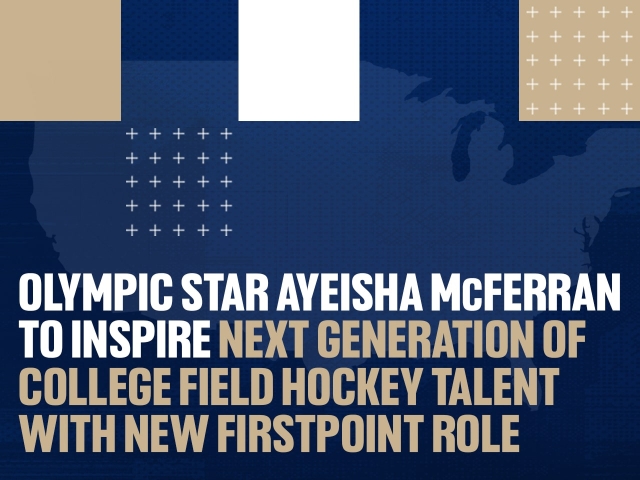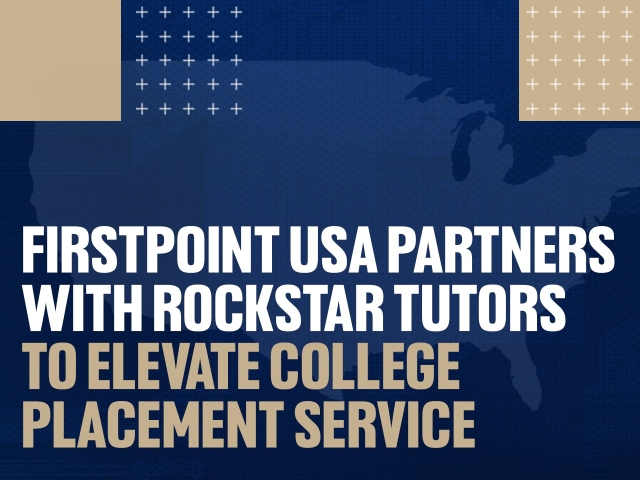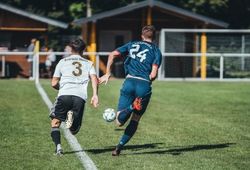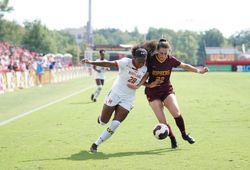Written by Laura Lewis, former athlete who has competed for both Great Britain and in the US at NCAA DI level, is now Associate Director for Olympic Sports at FirstPoint USA.
With a distinguished 25-year career in the strength and conditioning industry, David's expertise is unparalleled. He most recently served as Lead for Performance Science at the Paris 2024 Olympics and as a Strength & Conditioning Coach at the Tokyo 2021 Olympics for Team GB. Our Associate Director of Olympic Sports, Laura Lewis, had the pleasure of interviewing David, and we're excited to bring you the key takeaways from their insightful discussion.
Why Strength Training is Non-Negotiable for Young Athletes
The benefits of strength training are extensive and well-documented. Beyond building muscle, it significantly improves bone density, glucose metabolism, and overall metabolic health. David emphasized the importance of early engagement, highlighting how it can:
- Enhance physical capacity: Prepare young bodies for increased training loads as they progress through their teenage years.
- Reduce injury risk: Minimize training days lost due to injury and provide a solid foundation for technical and tactical development.
- Boost resilience: Research shows that stronger athletes are more resilient, recover faster from injuries, and bounce back more effectively from training sessions.
Navigating Growth Spurts: A Parent's Guide
Parents play a vital role in their child's athletic journey. David reminded us that teenage athletes experience growth spurts at different rates. While height and limb length might increase rapidly, coordination and motor control can take time to catch up. He reassured parents and athletes that a temporary feeling of "clumsiness" during these periods is normal and should not be a deterrent.
Preparing for the Collegiate Challenge: Bigger, Faster, Stronger
The US collegiate system presents a significant step up. As David explained, "everything is bigger at college" – from the gyms and team sizes to the demanding competition schedules. To thrive in this environment, early engagement with strength training before departure is crucial. Arriving in your best possible physical condition will allow you to embrace the increased training volume and intensity with confidence.
As FirstPoint USA Alum and Hockey Ireland Olympian, Ayeisha McFerran, who played at the University of Louisville, Kentucky, aptly puts it: "The fitter and healthier you are going in, the better the sports transition will be."
The Foundational Pillars of Athleticism
David outlined the key physical foundations every athlete should master:
- Fundamental Movement Patterns: Squat, Lunge, Hinge, Push, Pull, Rotate, Brace, Carry.
- Acceleration/Deceleration: The ability to quickly speed up and slow down.
- Aerobic / Anaerobic Conditioning: Developing endurance and explosive power.
Receiving expert coaching and feedback in these areas (ideally from an Accredited S&C Coach), alongside sport-specific technical training, will significantly enhance an athlete's "movement vocabulary" and body awareness. David also suggested starting a training diary – an excellent way for teenage athletes to monitor their progress, reflect on their training, and effectively communicate with college coaches in the future.
The Art of Recovery: Fuelling Adaptation and Performance
Recovery is a critical, often underestimated, driver of athlete adaptation. David explained that recovery strategies can be physiological, nutritional, or mental/psychological. Here are some examples:
- Physiological: Stretching, hydrotherapy, massage, ice bathing.
- Nutritional: Increasing carbohydrates and protein depending on the session's demands, and electrolytes to replace lost sweat.
- Psychological/Mental: Prioritizing sleep, meditation, and breathing exercises.
The best recovery strategy is often tailored to the specific demands of the prior session. For instance:
- After a heavy gym session, a high-protein meal can aid recovery.
- Post-contact sports session, ice bathing might be best for reducing soreness.
- Following an intense tactical session, quality sleep helps the mind relax and consolidate new skills.
- After a long aerobic session in a hot environment, a carbohydrate-based meal and electrolyte drink are ideal.
David reinforced that sleep is the number one driver of recovery and adaptation for busy, growing teenage athletes. With the vast range of recovery facilities available at US universities, it's essential for athletes to start understanding what interventions work best for them, especially after their college competition days.
David's Top Tips for Thriving in the US College System
David concluded the session with invaluable advice for aspiring student-athletes:
- Engage Early with Strength Training: Become competent at key lifts during high school before heading to the US.
- Push Your Intensity: As you mature, gradually increase your effort and intensity in training.
- Resolve All Niggles & Injuries: Ensure you are fully healthy before departing for college.
- Seek Wisdom from Others: Speak to current student-athletes who have experienced the transition, and buddy up with an older teammate when you arrive.
- Communicate Effectively: Maintain open lines of communication with your coaches and speak up if you have an issue.
- Establish Good Routines: Focus on consistent routines for studying, training, sleeping, and recovering to help your body adapt and thrive in your new environment.
Watch the full Strength and Conditioning webinar and gain even more insights from David Lasini below:




